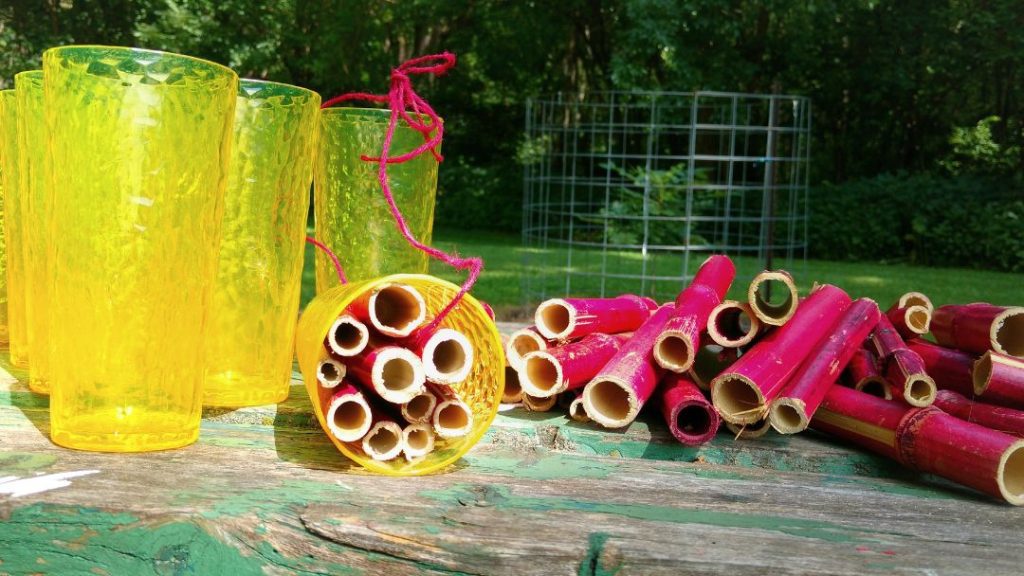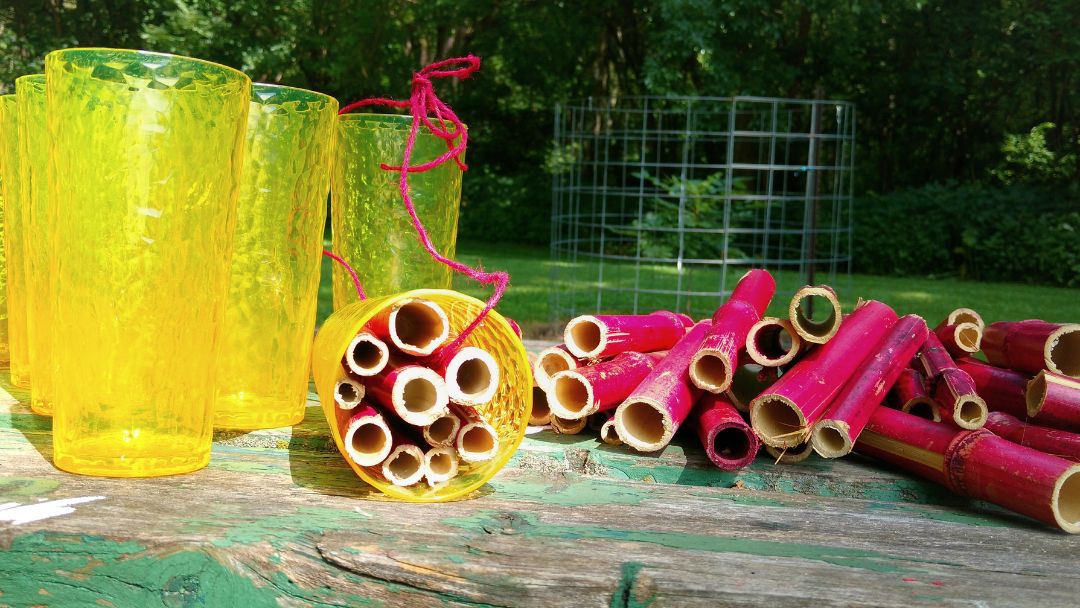How To Set Up Mason Bee House?
Wondering how to set up mason bee house? You can easily find various types of mason bee houses. But if you choose a poorly designed option, it can be a death trap for your bees.
The most important job for a beekeeper is choosing a safe and functional mason bee house. A bad mason bee nest may look super cute. But it may not be safe for bees as predators are most likely to harm and eat them.
Once you buy a decent mason bee house, your next job is setting up the mason bee house correctly. This blogpost will guide you regarding this topic. Let’s get into it!
How To Set Up Mason Bee House?
Setting up a Mason bee house is a long-term investment. It requires proper planning. You can go through the following steps to lay out a mason bee hotel.
Step 01: Picking Up The Right Time
When is the best time to set up a mason bee house? It is best to lay out the mason bee nest a few weeks before the solitary bees are active.
It generally occurs when the plants are going to produce flowers. Their flowers will bloom soon. There will be a minimal chance of frost.
For instance, blue orchard mason bees are active in the early spring and summer. Their preferred temperature for pollination is 55℉.
These cold-blooded insects need 1-14 days to warm up themselves. It helps them to raise their body temperature to an optimal level for active functioning.
Garden mason bees are highly active during spring, from March to April. They lay eggs by mid-May inside their nesting chambers. These summer bees are excellent for pollinating fruit and berry crops.
Step 02: Choosing The Right Location
Wondering where should a mason bee house be placed? So, which location have you decided to set up the mason bee house?
It is best to install a mason bee nest facing south or southeastern to receive a good amount of sun exposure in the morning. It will minimize the risk of facing extreme wind and cold.
These hardworking bees will start foraging earlier in the day. There will be fewer predators and competing pollinators. They can also conserve energy for other essential activities like nest building and reproduction.
Keep the mason bee house on a sturdy wall, post, or fence. It should not swing in the breeze. Another important thing is installing the mason around 4-6 feet off the ground. Predators, squirrels, children, and pets should not reach the nest easily.
Besides, keep the bee house at a slight downward angle to prevent water from pooling or collecting inside. It will make it more challenging for some predators to access the nesting tubes,
Step 03: Nesting Tubes/Reeds Placement
How do you place nesting tubes? Many new beekeepers keep the opening of the tube facing backward. It discourages mason bees from using the house conveniently.
Place the opening of the tube at the front side of the mason bee house. It allows each mason bee to emerge easily. They can also conveniently enter and exit the tube.
Each nesting tube has a natural node to seal the back end. It works as a natural back wall and prevents parasitic wasps and other pests from entering the nest.
You can also use reeds or wood trays instead of nesting tubes. Red and horned mason bees like reeds, which are visually attractive and allow female bees to relocate nests faster.
Besides, these tubes or reeds have plugs to seal the holes at the front section. These solitary bees use various types of plugs, such as chewed-up leaves, mud, etc. It prevents predators from getting inside.
Step 04: Giving Them A Little Overhang
Slightly overhanging, a mason bee hotel will protect your solitary bees from rain and frost. They are less likely to get wet in the rain. It also keeps the nesting tubes safe.
There will be a minimal chance of mold and fungal growth. Besides, larvae and pupae will stay safe without any sign of rotting inside the bee nest.
Of course, you want to add a well-made overhanging roof. Mason bees usually prefer natural options. You can use different types of woods, such as cedar, pine, redwood, etc.
They are durable and weather-resistant. Cleaning and maintaining wooden roofs is hassle-free, too.
Step 05: Setting Up The Clay Source
Mason bees need clay, which is a type of fine-grained natural soil material. They need it to plug their nests and between compartments.
Does your backyard garden have extremely organic or sandy soil? If so, it is best to keep a clay source. Otherwise, they may not refuse the hose to use.
Another important thing to remember is to keep the clay source near the Mason Bee Hotel. Mason bees don’t prefer to flay more than 300 yards or feet. They prefer to stay within 100 yards of their house to pollinate.
Avoid keeping the clay right below the house. It may not be easily visible to them. Put the clay in a plastic container near the bee nest. Allow them to access it naturally. Add a small amount of water occasionally when it becomes too much dry.

Maintenance Tips For Mason Bee Houses
You have already learned how to set up a mason bee house. But there are some challenges you may face while taking care of mason bees.
The following are some pro tips you can follow to make your beekeeping journey easygoing.
01. Avoid Buying Poorly Designed Mason Bee Houses
Securely placing a mason bee house is necessary. Avoid buying any mason bee nest that has picture hangers, nails, or strings.
They won’t hold up well in the nest over time, especially in outdoor conditions. The bee house may collapse or sway in the wind.
Instead, choose a mason bee house that you can attach with screws. It allows precise positioning of the bee house. It also provides added security against potential theft or vandalism.
02. Choose Cardboard Or Paper For Tubes/Reeds
Have you decided to use plastic, metal, or bamboo for reeds or tubes? They are highly durable and affordable, without any doubt.
But these items are not breathable. Most importantly, they promote mold growth. Different types of pathogens, such as excessive mold, chalkbrood, and pollen mites, can harm mason bees under this condition.
The best solution is to use cardboard or paper for tubes/reeds. These bee-friendly materials will keep mason bees safe from fungal pathogens and other diseases.
You can use parchment paper and strong and resilient spiral cardboard for tubes and reeds.
03. Select Tubes Or Reeds With Large Diameter
Regardless of the tube or reed you choose, they must have a large diameter. They must be at least ¼-inches wide. It will provide enhanced nesting capacity to accommodate more nesting materials, such as pollen and nectar provisions.
Plus, the nesting tube or reed must be 6-7 inches long. It will promote maximum mason bee nesting and cocoon harvesting.
Tubes or reeds with large diameters provide more space for mature bees to emerge from their nesting chambers. This reduces the risk of bees getting stuck or damaging their wings during emergence. It also reduces the risk of diseases and parasites affecting mason bee larvae.
04. Don’t Reuse Mason Bee Reeds
Never reuse nesting reeds because they split easily. Plus, adult mason bees carry a huge number of mites as they fly around.
If you don’t replace tubes or reeds every season, pollen mites are likely to build up over time. Make sure to discard the older tubes or reeds.
If you have no choice left, you clean them thoroughly and rotate them with new ones. Use a scissor to tear apart the nesting reeds.
05. Store Nesting Tubes And Blocks In A Safe Zone
Does your mason bee house have overpopulation? You can store nesting tubes and blocks separately to have better population growth.
Besides, predators won’t be able to eat the growing mason bees. You can keep mason bee nesting tubes and blocks in cardboard boxes, plastic containers, sealed paper bags, etc.
Make sure to store them in a cool location where the temperature remains above freezing but below 50°F (10°C).
Ensure the storage area is dry and well-ventilated to prevent moisture buildup, which can lead to mold or fungal issues.
06. Clean Their House Every Fall
Mason bee houses are likely to inadvertently spread diseases and mites if they are not cleaned regularly. It is best to clean a Mason Bee Hotel at least once every fall.
Does your bee nest have reeds or tubes attached at the back of it through glue? If so, the mess can be more. It has a high chance of growing fungus and parasites.
It is a good rule of thumb to rotate the mason bee house once every two or three years. There will be a reduced chance of building up pests, diseases, and debris within the nesting tubes.
Also, it encourages a healthier nesting environment, reduces the risk of contamination, and ensures the continued productivity of mason bee populations.
Wrapping UP
Taking care of mason bees is a long-term journey. But it is not as hard as honey bees.
Mason bees are hardworking, solitary bees. You will be rewarded in the long run if you take some minimum care.
I have already instructed how to set up a mason bee house. Ensure you go through the instructions carefully if you are buying store-bought mason bees.
They may instruct some special steps that may not match other housing options. Hopefully, the above discussion has given you some valuable insights on how to take care of mason bee homes.

